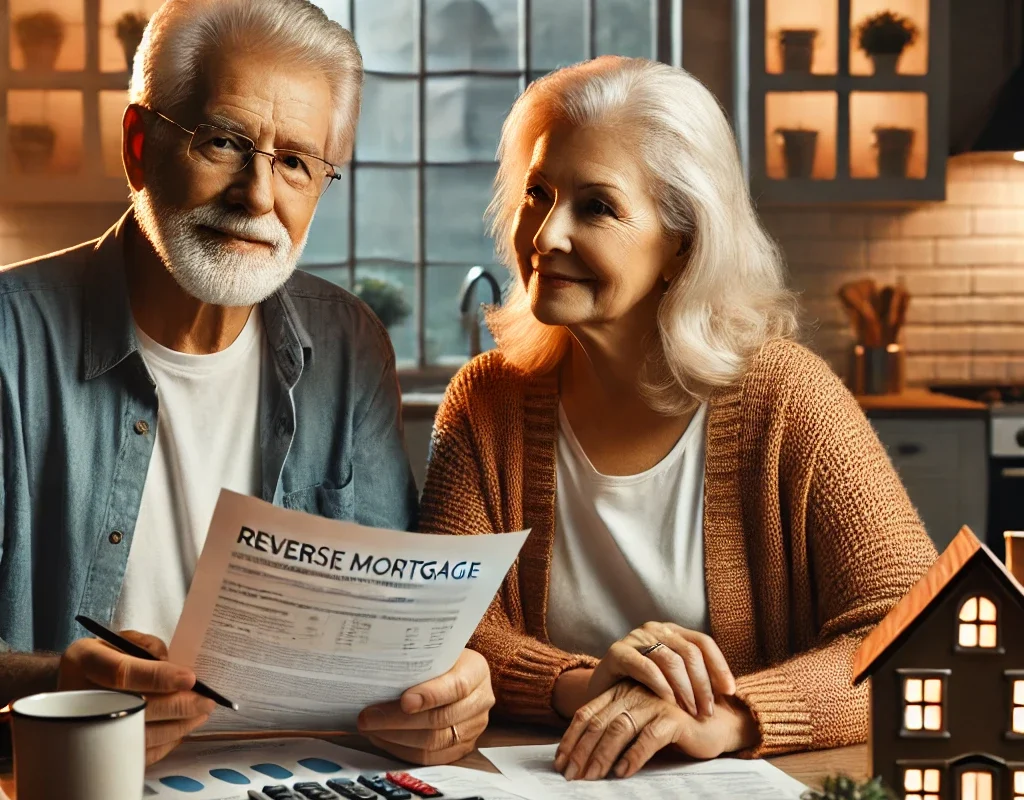Reverse mortgages can be a game-changer for many retirees, offering a way to unlock home equity and convert it into a steady source of income. This option is particularly appealing to homeowners who are “house-rich” but cash-poor, enabling them to remain in their homes while tapping into much-needed funds. Whether you’re looking to supplement your social security, delay withdrawals from retirement accounts, or simply cover unexpected expenses, a reverse mortgage might be the financial tool you need to secure a stable and comfortable retirement.
Understanding Reverse Mortgages
How Reverse Mortgages Work
A reverse mortgage allows homeowners to borrow against the value of their home, receiving funds in various formats, such as monthly payments, lump sums, or lines of credit. Unlike traditional mortgages, where borrowers make payments to the lender, reverse mortgages operate in reverse — the lender makes payments to the homeowner. The homeowner retains ownership of the property and doesn’t need to make repayments until the home is sold, or the borrower permanently moves out or passes away.
Different Types of Reverse Mortgages
There are three main types of reverse mortgages available, each catering to different financial needs:
- Home Equity Conversion Mortgages (HECMs): Insured by the Federal Housing Administration (FHA), these are the most popular reverse mortgages. They offer flexible payment options and are backed by government protections.
- Proprietary Reverse Mortgages: These are private loans not backed by the government. They typically cater to those with higher home values and offer more borrowing power.
- Single-Purpose Reverse Mortgages: Usually offered by state and local government agencies, these loans are the most affordable but come with restrictions on how the funds can be used, such as paying for home repairs or property taxes.
Reverse Mortgage Eligibility Requirements
To qualify for a reverse mortgage, homeowners must meet several requirements:
- Be at least 62 years old
- Own the home outright or have significant equity
- Occupy the home as your primary residence
- Stay current on property taxes, homeowner’s insurance, and maintenance
- Undergo counseling from a HUD-approved agency to understand the costs and obligations associated with a reverse mortgage
Reverse Mortgage for Retirement: A Practical Overview
Why Consider a Reverse Mortgage for Retirement Income?
As retirement approaches, many find that their savings, pensions, and social security benefits fall short of their living expenses. A reverse mortgage allows retirees to access an additional income stream without needing to sell their home or take on additional debt. It’s a way to leverage your home equity to fill gaps in your retirement income.
Advantages of Using Reverse Mortgages for Retirement
Reverse mortgages offer several benefits for retirees:
- No Monthly Mortgage Payments: Homeowners aren’t required to make monthly payments, freeing up cash for other expenses.
- Stay in Your Home: Reverse mortgages allow you to age in place, which is a major priority for many retirees.
- Flexible Payment Options: You can choose to receive a lump sum, monthly installments, or even a line of credit that you can draw from as needed.
- Non-Recourse Loan: If the home’s value drops below the loan balance, you (or your heirs) won’t be responsible for the shortfall. The lender cannot come after other assets.
Risks and Disadvantages of Reverse Mortgages
While reverse mortgages can be an excellent option for many, they also come with potential downsides:
- Accruing Interest: Because you’re not making payments, interest on the loan compounds over time, meaning the amount owed grows.
- Reduced Home Equity: Your home equity decreases as you borrow against it, leaving less for your heirs.
- Fees and Closing Costs: Reverse mortgages can come with high upfront costs, which can eat into the total amount you receive.
- Homeowner Responsibilities: Borrowers must maintain the home and stay current on property taxes and insurance. Failure to do so could result in foreclosure.
How to Qualify for a Reverse Mortgage
Age and Ownership Requirements
The key eligibility factor for a reverse mortgage is age. Borrowers must be at least 62 years old. Additionally, you must either own your home outright or have a small enough mortgage balance that it can be paid off with the proceeds of the reverse mortgage.
Credit and Financial Considerations
While reverse mortgages don’t require a specific credit score or income threshold, lenders will assess your ability to meet ongoing financial obligations, like property taxes and homeowner’s insurance. The goal is to ensure that you can maintain the property and prevent foreclosure.
Setting Up a Reverse Mortgage for Retirement Income
Step-by-Step Process to Obtain a Reverse Mortgage
- Counseling Session: Borrowers must complete a counseling session with a HUD-approved agency to ensure they fully understand the loan terms.
- Appraisal and Application: The property must undergo an appraisal to determine its current market value. Then, you’ll complete a loan application with the lender.
- Loan Approval: Once the appraisal and financial assessments are complete, the lender will approve the loan.
- Loan Disbursement: After closing, you can choose how to receive your funds: lump sum, monthly payments, or a line of credit.
Choosing the Best Reverse Mortgage Option for You
The best reverse mortgage option depends on your financial situation and goals. If you want to supplement monthly income, opt for a payment plan. If you need money for a large expense, such as medical bills or home repairs, a lump sum may be more suitable. Finally, a line of credit offers flexibility and can be drawn upon as needed.
You Can Also Read : How to Avoid Common Mortgage Mistakes and Pitfalls
Legal and Regulatory Considerations
Reverse mortgages are subject to strict regulations to protect consumers. Homeowners must undergo counseling, and lenders must comply with federal guidelines set by the FHA. Additionally, reverse mortgages are non-recourse loans, meaning borrowers or their heirs cannot owe more than the home’s value at the time of sale.
